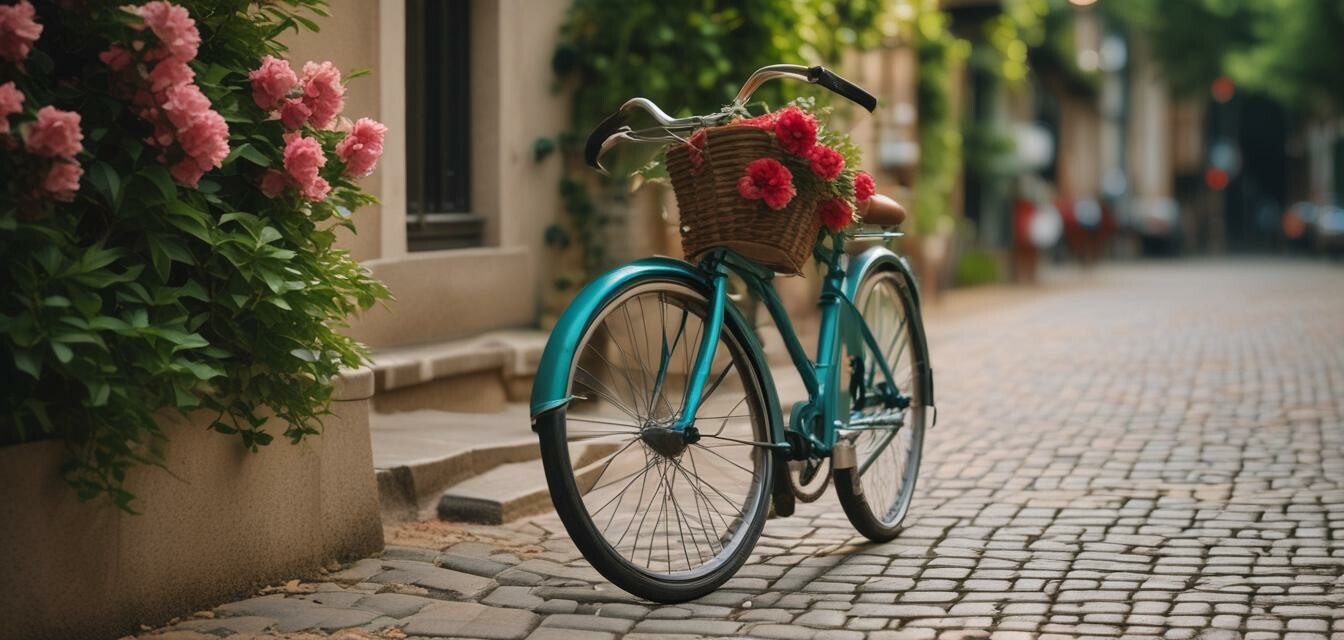
Vintage Cycling's Role in Urban Sustainability
- Vintage cycling promotes eco-friendly commuting and reduces carbon emissions.
- Reviving classic bikes helps preserve history and encourages local craftsmanship.
- Urban design influenced by cycling can lead to sustainable cities.
- Vintage bicycle accessories add to the charm and utility for commuters.
- Engagement in vintage cycling fosters community support and local economies.
Urban sustainability is a topic on everyone’s lips these days, with cities striving to reduce their carbon footprints and promote eco-friendly living. One charming solution that has steadily gained popularity is vintage cycling. This article will examine how vintage cycling not only promotes a greener way of getting around but also enriches our urban landscapes and strengthens community ties.
The Eco-Friendly Commuting Revolution
As our cities grow, the need for alternative modes of transportation is becoming increasingly urgent. Vintage bicycles, with their elegant designs and durable construction, offer a unique and practical solution. They reduce the dependency on fossil fuel-powered vehicles and help decrease air pollution.
Many cities have begun integrating bike lanes to accommodate cyclists, which encourages more individuals to adopt this eco-friendly option. Here are some benefits of choosing vintage cycling as a mode of transportation:
- Reduces carbon emissions: Each ride on a bicycle eliminates the fumes that would otherwise come from cars.
- Improves health: Cycling is a great way to incorporate physical activity into daily life, reducing congestion and health issues in urban areas.
- Lower transportation costs: Owning and maintaining a vintage bicycle is often cheaper than using a car or public transport.
Preserving Our Heritage
Vintage bicycles are more than just transportation; they are pieces of history. Embracing vintage cycling helps to preserve not just the bicycles themselves, but the craftsmanship behind them. By encouraging people to restore and maintain these classic models, we're sustaining a culture of craftsmanship and reducing waste.
Local Craftsmanship and Economy
Supporting vintage cycling creates a demand for local artisans who restore these bicycles and create accessories. Retro bicycle accessories like classic bells, leather saddles, and period-correct apparel not only enhance the cycling experience but also promote local businesses. Explore essential vintage accessories in our Classic Bells & Horns, Leather Saddles, and Period-Correct Apparel categories.
Urban Design and Bicycle Infrastructure
Cities around the world are beginning to recognize the importance of facilitating cycling as a primary means of transport. This has resulted in an increase in well-designed bicycle lanes and bike-sharing initiatives. Urban planners are taking cues from vintage cycling culture to create spaces that prioritize both cyclists and pedestrians, helping to reshape urban environments.
Let’s take a look at some key urban design elements influenced by vintage cycling:
| Design Element | Description |
|---|---|
| Bike lanes | Dedicated pathways ensuring safety and encouraging cycling. |
| Bicycle parking | Designated areas that help reduce clutter and promote cycling. |
| Bike-sharing programs | Allows easy access to vintage bicycles for short trips around the city. |
| Community events | Encourages interaction between cyclists and promotes local cycling culture. |
Community Engagement and Support
Vintage cycling fosters a community spirit among enthusiasts. Gatherings, events, and workshops centered around vintage bicycles help create a bond among local cyclists. These activities encourage people to share experiences and support one another, ultimately benefiting the community and local businesses.
The vintage cycling movement highlights sustainable practices that can be applied in daily life. By embracing this nostalgic mode of travel, individuals underscore the importance of preserving our environment for future generations.
The Future of Urban Sustainability and Vintage Cycling
As concerns about urban sustainability grow, vintage cycling could play a pivotal role in shaping future cities. With a focus on reducing carbon emissions, preserving culture, and enhancing community engagement, vintage bikes stand out as a timeless solution. Encouraging the use of bicycles can lead to healthier and more connected urban environments.
Tips for Getting Started with Vintage Cycling
- Start with a comfortable, vintage bicycle that suits your style and commuting needs.
- Invest in accessories that enhance both functionality and aesthetics, such as leather saddles and retro lighting.
- Join local vintage cycling groups to meet fellow enthusiasts and participate in community rides.
- Stay informed about local bike lanes and community events promoting cycling.
Pros
- Greatly reduces carbon footprints and promotes a greener lifestyle.
- Stimulates local economies by supporting small businesses.
- Fosters community ties and encourages active lifestyles.
Cons
- Challenges in urban areas with insufficient bike lanes.
- Possibility of theft and security issues with vintage bicycles.
- Maintenance required for older bicycles may deter some users.
Conclusion
Vintage cycling holds immense potential for enhancing urban sustainability efforts. It emphasizes eco-friendly commuting, community engagement, and preserving local culture—features that continue to resonate in urban environments. By embracing the charm and practicality of vintage bicycles, we can contribute positively towards a sustainable future, one ride at a time.
To stay updated with the latest trends in the vintage cycling community, be sure to check out our News and Trends section. Together, let's pedal our way to a sustainable tomorrow!



